
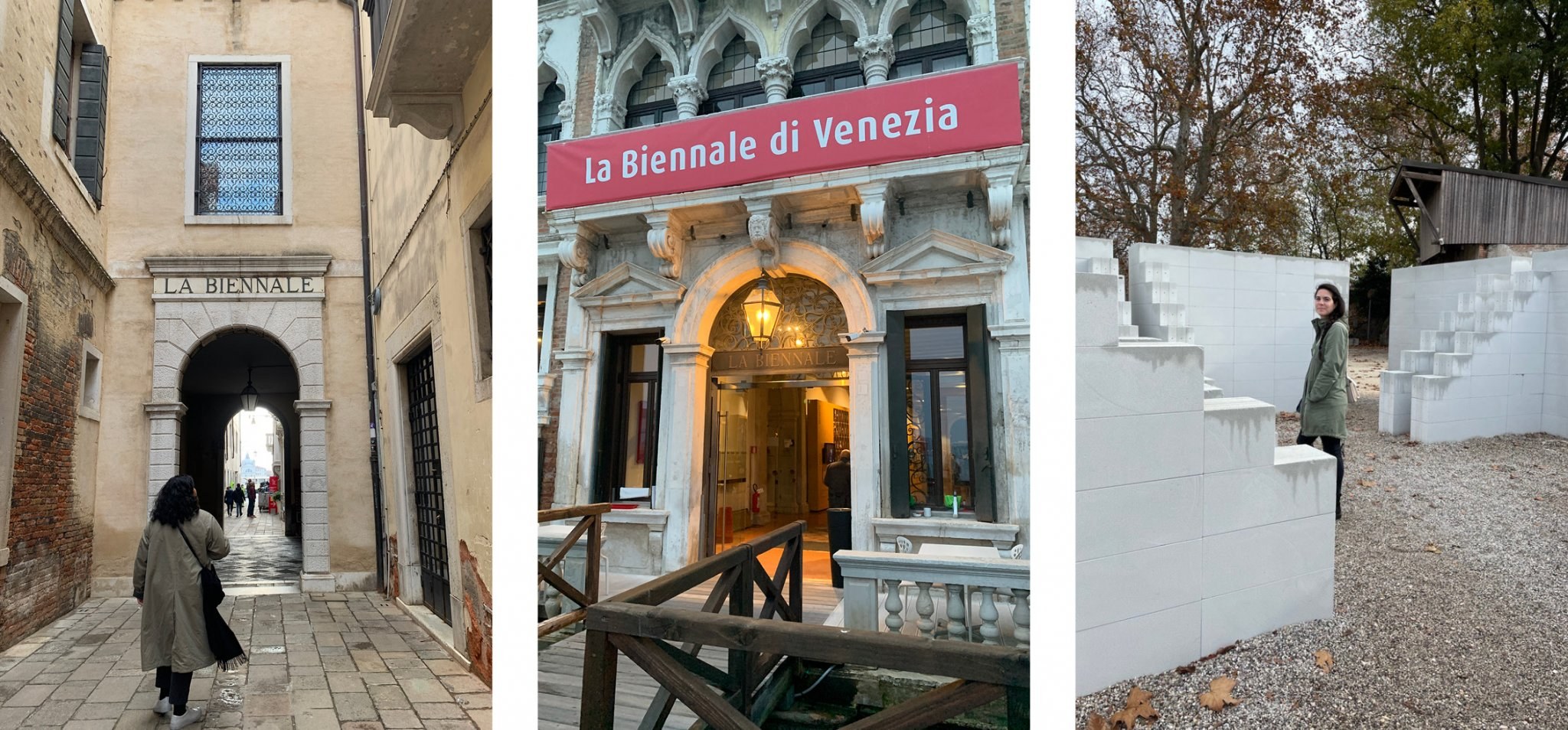
Two of our Interior Designers, Neha and Alessia, visited the Venice Biennale last week featuring the Hashim Sarkis curated ‘How will we live together?’. Joining over 300,000 visitors at this year’s exhibition, they reflected on common themes across the experiments and innovations from over 40 countries addressing existing and emerging challenges we now face in light of the timely discussions at COP26.
Identifying three key themes: Learning from nature, Learning to live small, and Learning from our past.
The first of the themes investigated by many of the exhibitors was looking at what we can learn from nature, be that coexistence, our responsibility to replace and replenish, or the necessity to position ourselves within natural systems and appreciate the symbiotic relationship that we take for granted. On the theme of learning from nature, there were displays interrogating the innovative use of fibrous materials showing how these structures can achieve high tensile strength, utilising 3D printing, and in fact challenge the concrete construction methods which have dominated our industry over the last century. Fibrous construction and related fabrication processes are open to a rich repertoire of materials suitable for the approach, ranging from glass and carbon fibers as used in the installation, to mineral fibers capable of withstanding extreme conditions and naturally grown bio-based fibers which can be harvested annually from crops. By using this method of construction we would not only be able to build incredibly strong structures, but we would also be able to use "less material" to achieve "more form". Dense fibrous constructs, of which bone and skin are both composed, allow us to question our current building practices by showing us that by marrying technology with materiality we can engineer existing materials to perform more efficiently and help to combat climate change.
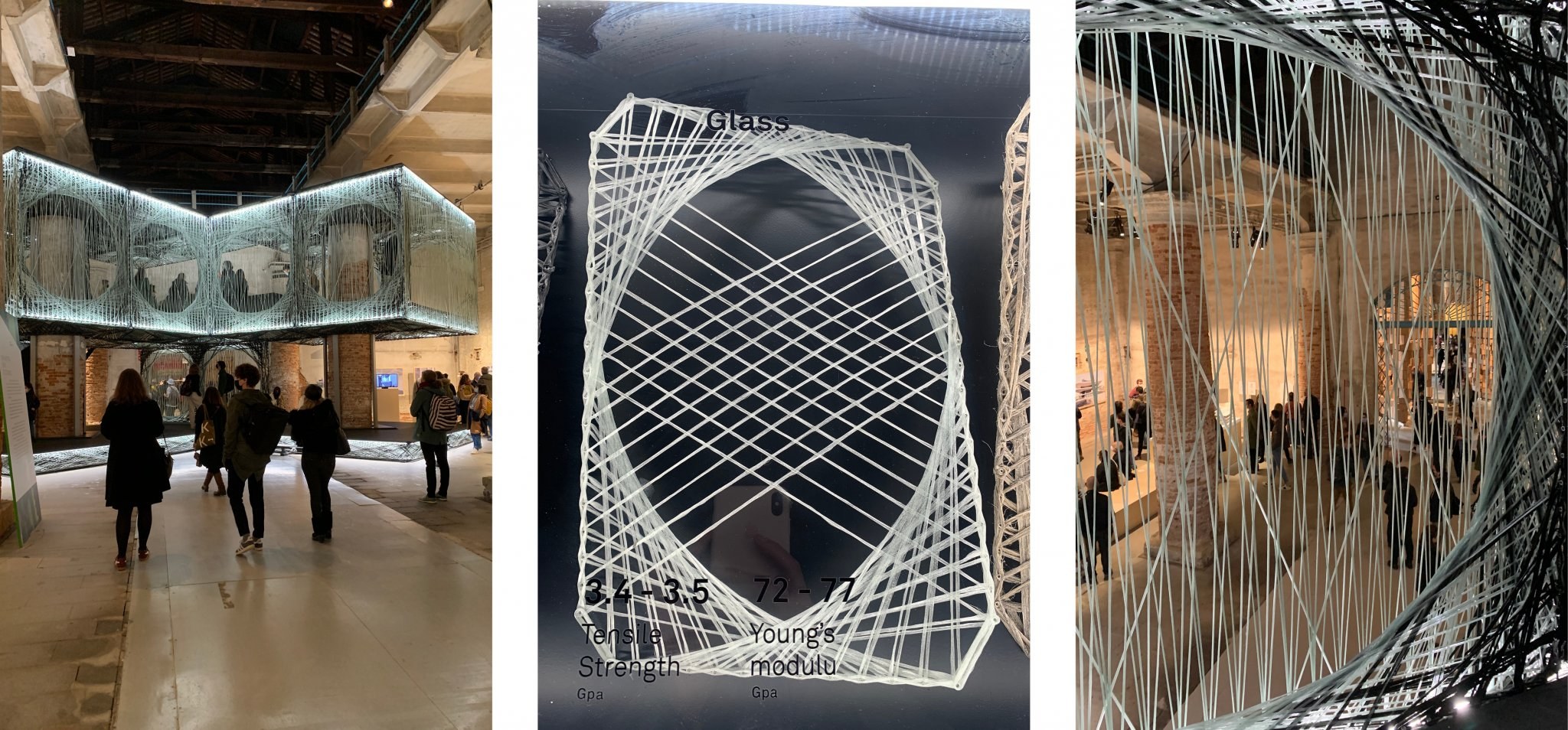
Learning from nature means looking at all scales, be that leaf structures or forests. Specifically focussing on bees, and their hives, they intuitively avoid waste using as little material as possible whilst achieving the strength required for any complex structure. Tomáš Libertíny's sculpture ‘Eternity' involved an unusual two-year collaboration with over 60,000 bees who built their beeswax honeycombs around the skeleton of the bust of Nefertiti. As part of his ‘made by bees’ series, the timeless bust is mirrored by the material which can 'potentially last thousands of years without deterioration'.
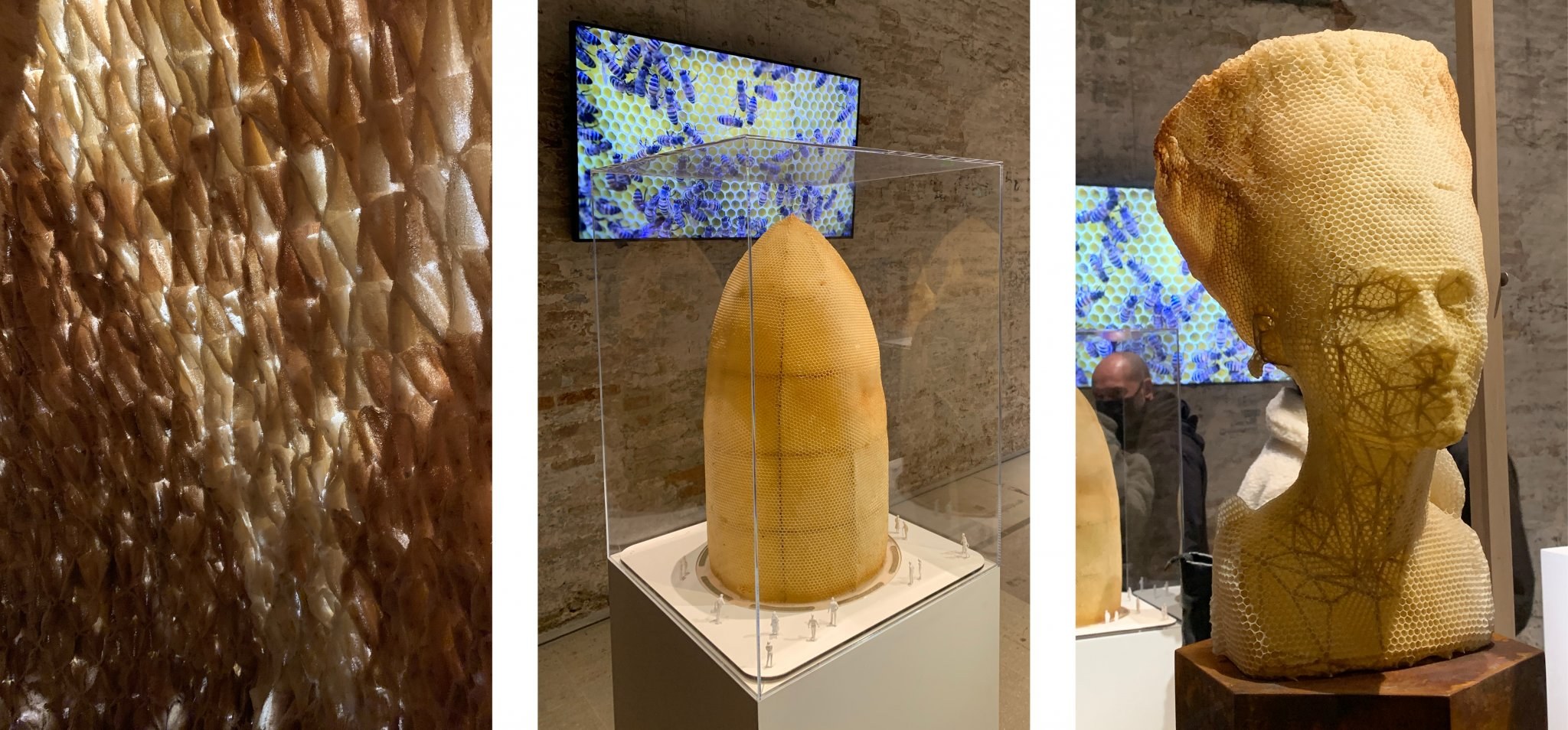
The second theme revolved around learning how to live smaller, with less, in better-designed spaces. We can learn to live in a more compact way by reflecting on what we actually need and who we will live with. As our populations are increasingly aging, how will this affect our family dynamic, and with who will we cohabit? What will the family home look like in 50 or 100 years if we embrace intergenerational living? Looking at architectural responses to future homes and conurbations, exhibits imagined small, self-sufficient communities of glass-encapsulated homes surrounded by forests or floating communities when many of the cities we know will be fully or partially submerged - including Venice.
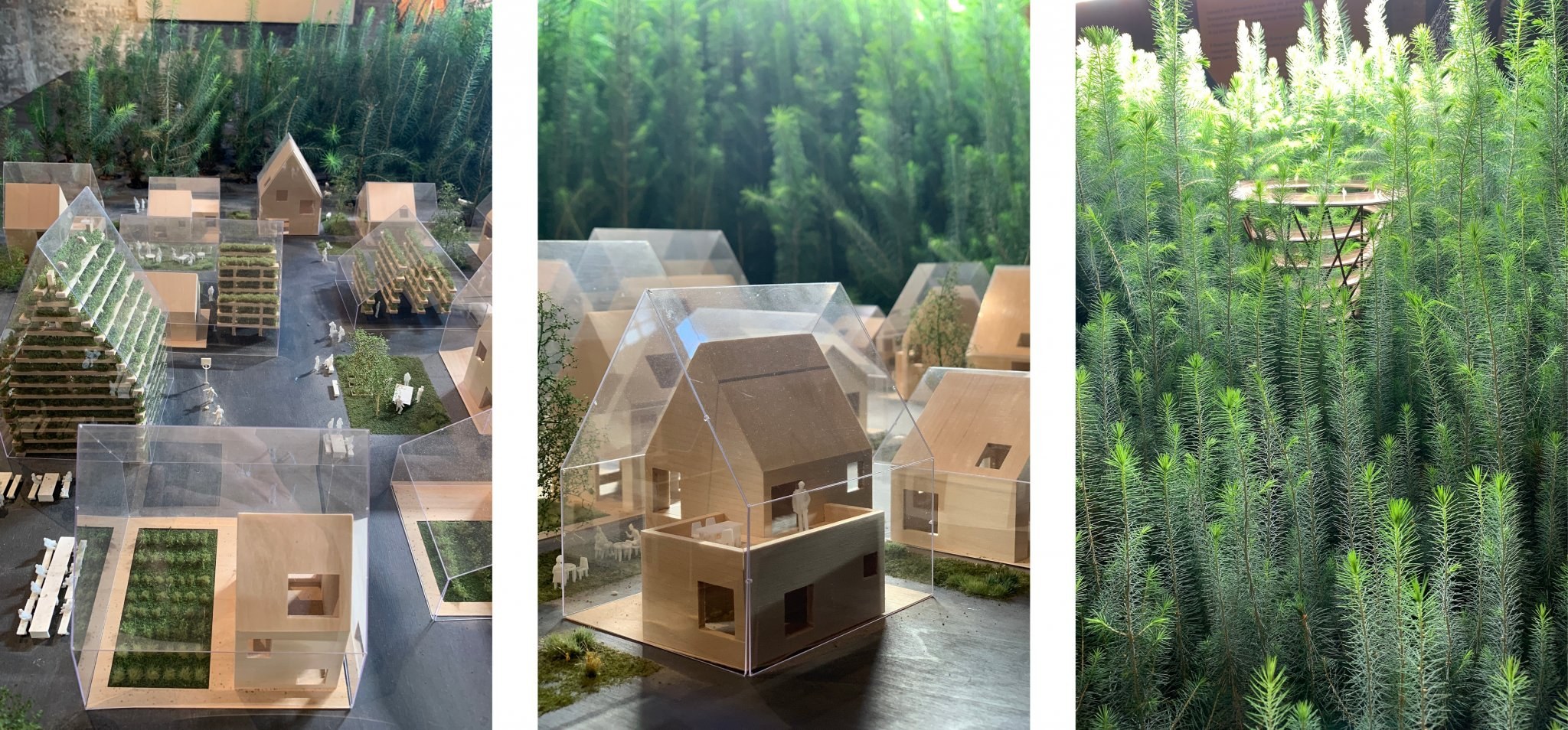
The final and most damning theme, learning from our past, involved the question of how we should build when we leave earth, or when earth is no longer able to replenish. From explorations into terraforming, inflatable space modules, or 3d-printing with reclaimed materials, each installation looked at the lessons we have learned while pushing the earth increasingly towards uninhabitability. SOM and ESA’s 'Moon Village’ highlighted the potential for the lunar surface as a 'testing ground for new ways of living in extreme environments and a model for global collaboration in outer space'. Though in stark contrast to the forest and floating communities on display, the lunar community shares the same necessity for self-sufficiency and resource sharing, something only possible due to its location in the sun-kissed south polar region of the moon. The shared requirement to design for the most extreme conditions, be it on earth or the moon's surface, suggests the urgency with which we must act today.
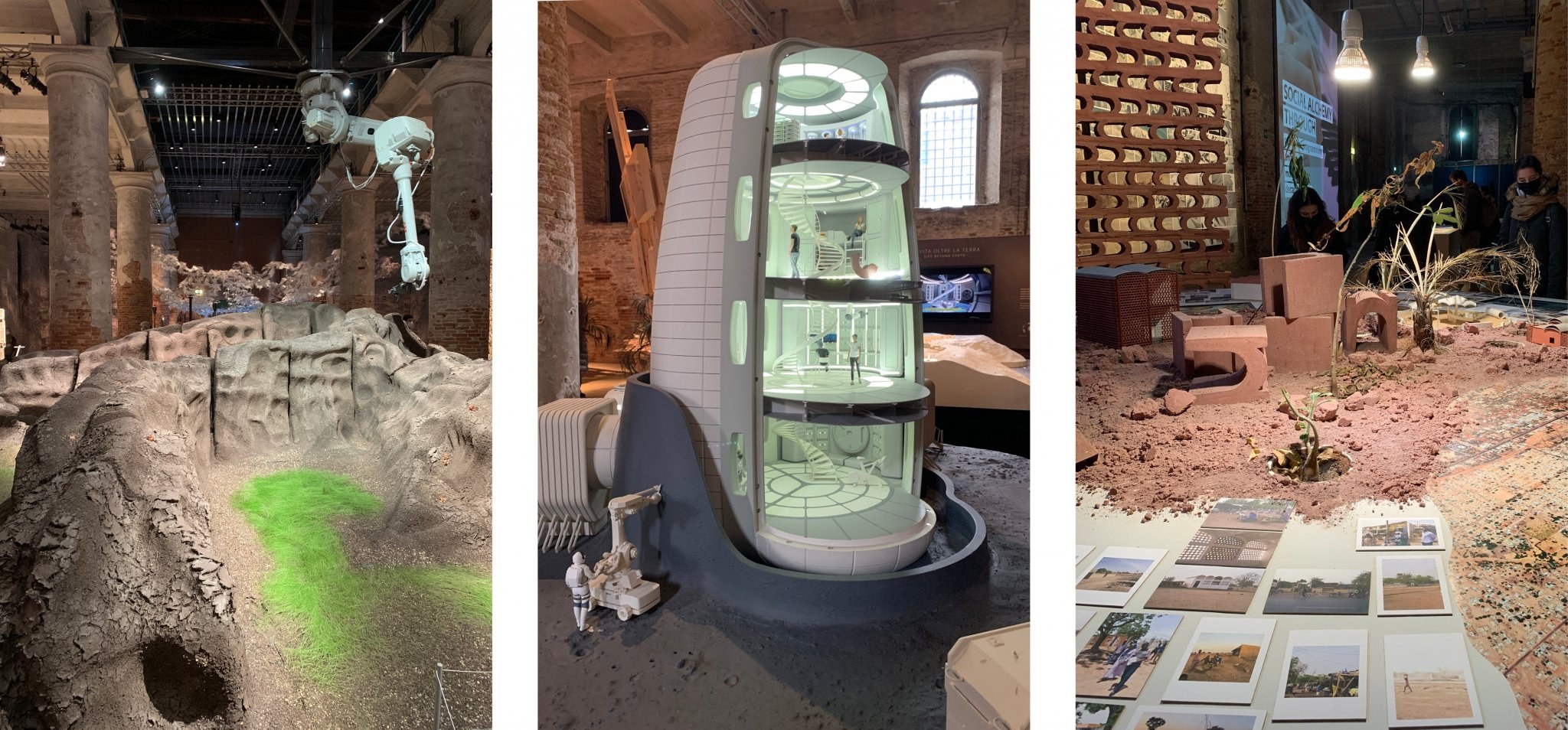
Neha and Alessia came away from the exhibition asking many more questions than ‘How will we live together?’. The installations have highlighted that we must think about waste more in both design and methodology, avoiding the skips full of debris each time a house or commercial space is ripped out for refit and instead prioritising the recycling and reuse of waste to give it new life. Equally, we must source items that are sustainably produced and that can be reused and recycled at the end of their life, learning to weave into our specifications sustainable suppliers, and tap into the increasing move to buy vintage and promote the demand for repurpose. We must consider how our designs can create less waste and look at the journey some of our pieces take before arriving at our sites to assess how they can be sourced more locally. We must take steps to combat the challenges we all face and look at how the way we design today can prevent the damage of tomorrow.
We must learn from the bees.